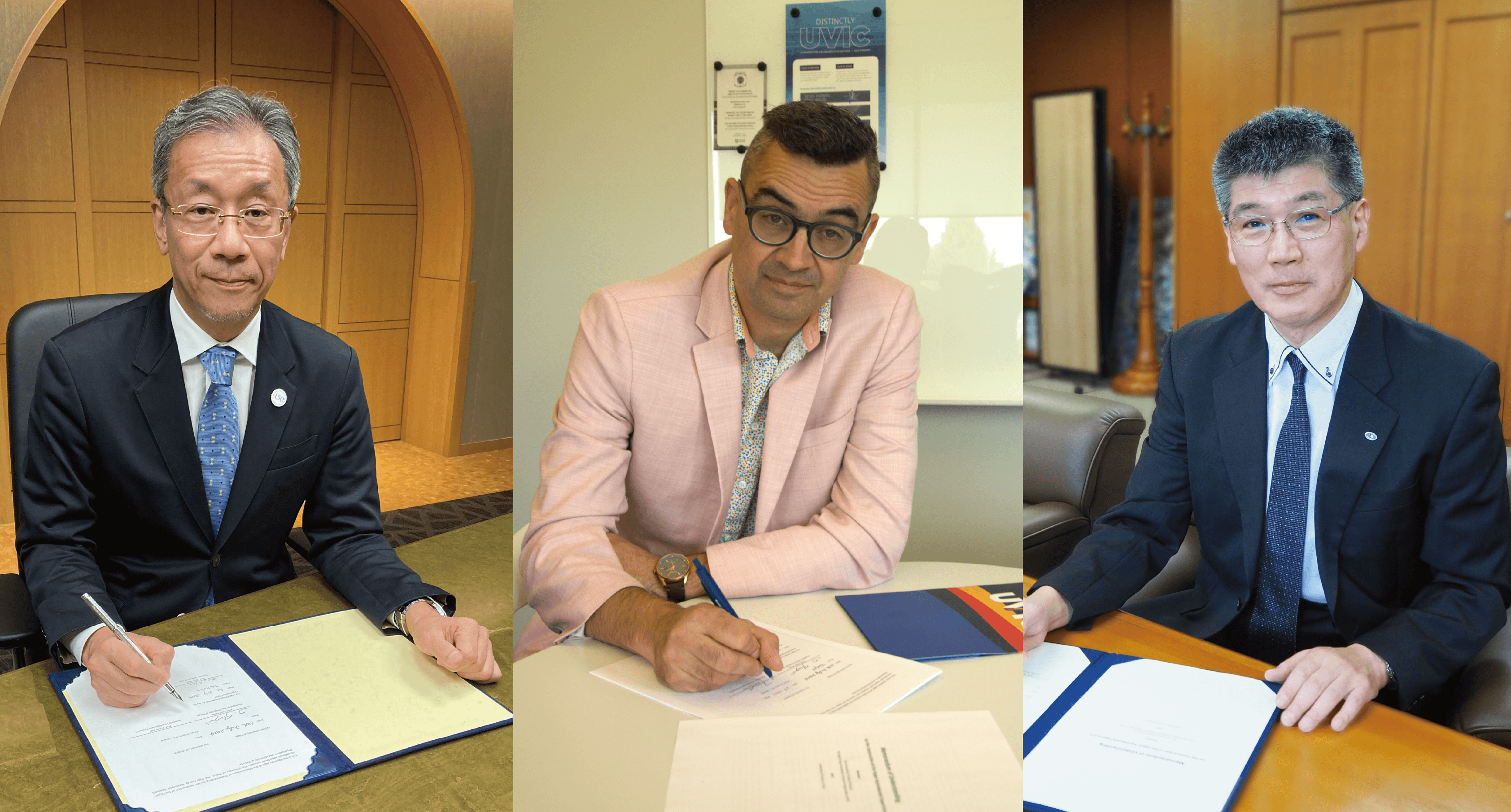University of Victoria (Canada), KEK and UTokyo sign MoU to promote Hyper-Kamiokande Project

University of Victoria (UVic), High Energy Accelerator Research Organization (KEK) and the University of Tokyo (UTokyo) signed a memorandum of understanding (MoU), which aims to promote the Hyper-Kamiokande international scientific research project, whose main detector has been under construction with plans to start operation in 2027 at Kamioka, Hida City, Gifu Prefecture in Japan. Twenty-two countries showed their interest in participating in this Japan-led project, and Canada is the fourth nation to sign the MoU, following Poland, Spain and Italy.

UTokyo President Fujii (left), UVic Associate Vice-President of Research Hof (center) and KEK Director General Asai (right) signing the MoU
UTokyo President Teruo Fujii, KEK Director General Shoji Asai and Associate Vice-President of Research, UVic Fraser Hof exchanged signatures by post by the end of July 2024.
According to the MoU, the Canadian participation in Hyper-Kamiokande has been organized by seven groups: British Columbia Institute of Technology, Carleton University, Canada's Particle Accelerator Centre (TRIUMF), University of Regina, University of Victoria, University of Winnipeg and York University. The major expected contributions of Canada are the development, production and installation of new photosensor modules (multi-PMT), a photogrammetry calibration system and a water quality monitoring system for the Hyper-Kamiokande detector. Another contributions to the new Intermediate Water Cherenkov Detector (IWCD) have been defined in a separate memorandum of understanding between KEK and UVic signed in November 2022.
The Hyper-Kamiokande detector is planned to have a fiducial mass eight times larger than its predecessor detector, Super-Kamiokande, and it is equipped with newly developed high-sensitivity photosensors. The aim of the project is to elucidate the Grand Unified Theory and the history of the evolution of the Universe through an investigation of proton decay and CP violation (the asymmetry between neutrinos and antineutrinos), together with the observation of neutrinos from supernova explosions. The budget of the construction was approved by the Japanese Diet, which marked the official start of the project in February 2020. Construction has gotten into full swing with the main cavern excavation, which started in November 2022, and successful completion of the main dome section for the experimental site in October 2023.

UTokyo President Teruo Fujii, KEK Director General Shoji Asai and Associate Vice-President of Research, UVic Fraser Hof exchanged signatures by post by the end of July 2024.
According to the MoU, the Canadian participation in Hyper-Kamiokande has been organized by seven groups: British Columbia Institute of Technology, Carleton University, Canada's Particle Accelerator Centre (TRIUMF), University of Regina, University of Victoria, University of Winnipeg and York University. The major expected contributions of Canada are the development, production and installation of new photosensor modules (multi-PMT), a photogrammetry calibration system and a water quality monitoring system for the Hyper-Kamiokande detector. Another contributions to the new Intermediate Water Cherenkov Detector (IWCD) have been defined in a separate memorandum of understanding between KEK and UVic signed in November 2022.
The Hyper-Kamiokande detector is planned to have a fiducial mass eight times larger than its predecessor detector, Super-Kamiokande, and it is equipped with newly developed high-sensitivity photosensors. The aim of the project is to elucidate the Grand Unified Theory and the history of the evolution of the Universe through an investigation of proton decay and CP violation (the asymmetry between neutrinos and antineutrinos), together with the observation of neutrinos from supernova explosions. The budget of the construction was approved by the Japanese Diet, which marked the official start of the project in February 2020. Construction has gotten into full swing with the main cavern excavation, which started in November 2022, and successful completion of the main dome section for the experimental site in October 2023.






